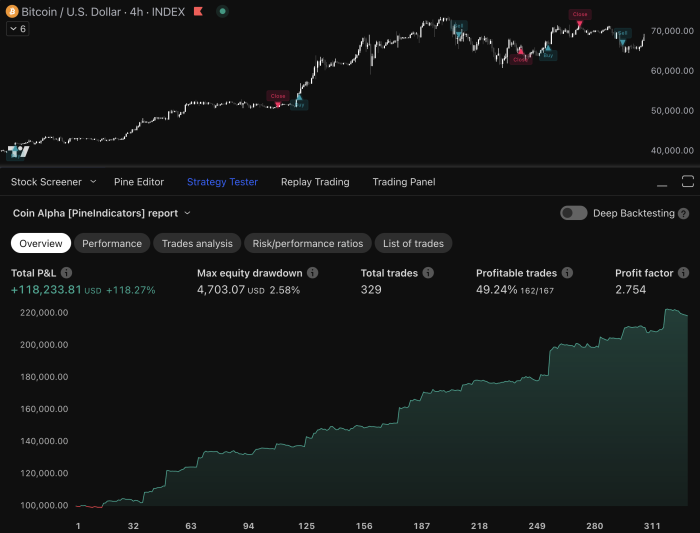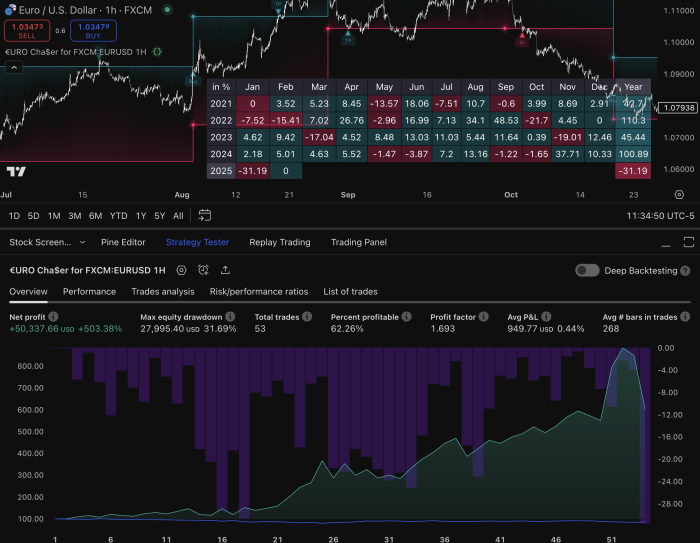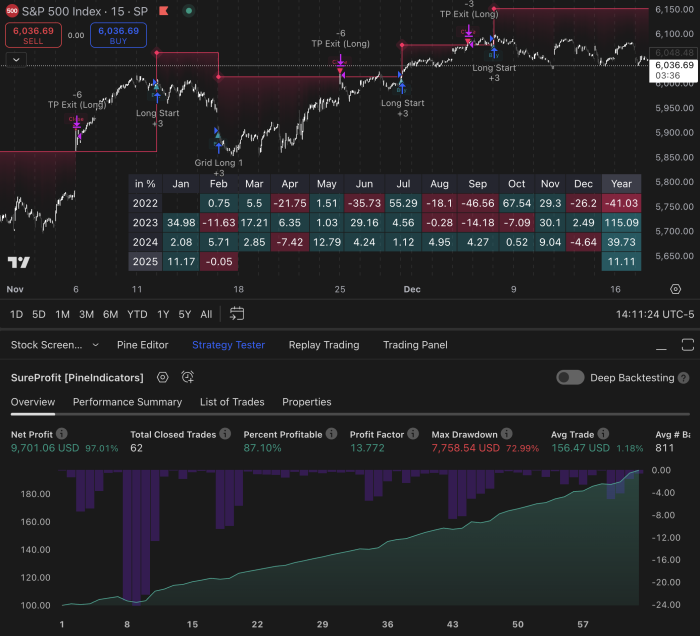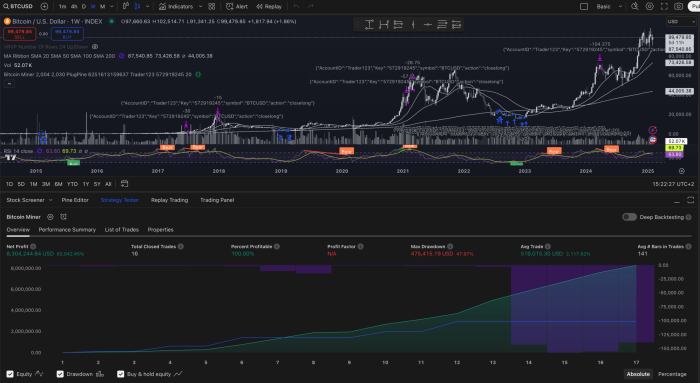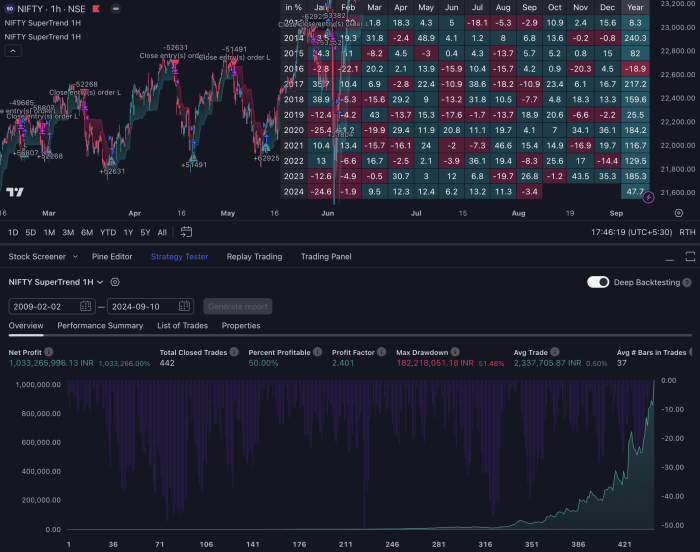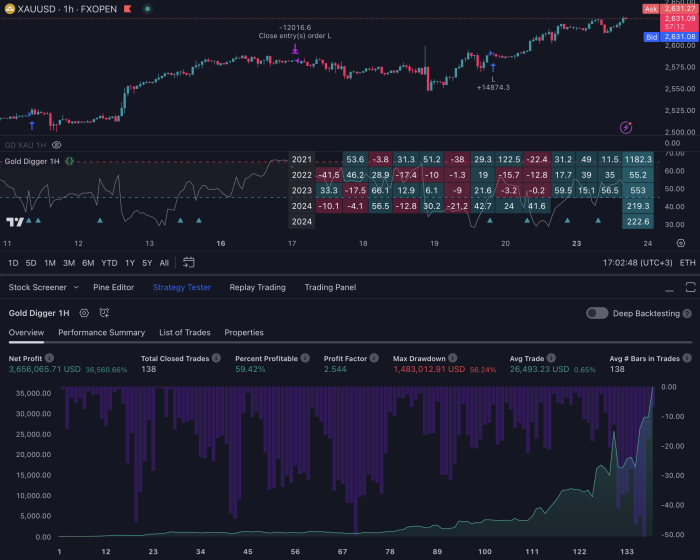Introduction
Market volatility can be scary, even for experienced investors. Rapid price changes, unpredictable market movements, and financial uncertainty make it difficult to protect and grow your investments. It’s crucial to have effective strategies in place during these times – it’s not just helpful, but necessary for long-term financial success.
Recent market events have shown that traditional “buy and hold” approaches might not be enough anymore. You need a wide range of investment strategies to weather market storms and seize opportunities. Whether you’re a beginner investor or an experienced trader, knowing how to navigate market volatility can make a big difference in reaching your financial goals.
This guide will equip you with:
- Risk management techniques to protect your portfolio
- Practical diversification strategies for different market conditions
- Time-tested methods to maintain steady growth during turbulence
- Professional insights for making informed investment decisions
To help you build resilience in your investment approach and turn market volatility into potential opportunities for growth, we will explore some proven strategies:
- Implementing tradingview breakout strategies to take advantage of sudden price changes.
- Utilizing advanced Pine Script tutorials for more sophisticated trading strategies.
- Learning how to effectively backtest Pine Script strategies to ensure their viability before applying them in real-time.
- Exploring automated Pine Script strategies for a more hands-off approach that still yields results.
By using these resources and insights, you can better navigate the turbulent waters of market volatility and come out with greater financial stability and growth.
Understanding Market Volatility
Market volatility represents the rate and magnitude of price changes in financial markets. These price swings can create both opportunities and risks for investors, directly impacting portfolio values and investment returns.
Key Factors Driving Market Volatility
Several key factors drive market volatility:
- Economic Indicators: Inflation rates, interest rate changes, GDP growth, and employment data.
- External Events: Geopolitical conflicts, natural disasters, global health crises, and political shifts.
Historical Examples of Volatility’s Impact
The impact of volatility becomes clear through historical examples. The 2008 financial crisis saw the S&P 500 drop 38.5% in a single year, while the COVID-19 pandemic triggered a 34% market decline in just 33 days during 2020. These events demonstrate how sudden market shifts can dramatically affect investment portfolios.
Monitoring Volatility
You can monitor volatility through specific measurements and indicators:
- VIX Index – Known as the “fear gauge,” measuring expected market volatility.
- Beta Values – Indicating how volatile an individual stock is compared to the market.
- Standard Deviation – Showing the spread of returns for a specific investment.
Understanding these indicators helps you anticipate potential market movements and adjust your investment strategy accordingly. The key lies in recognizing that volatility is an inherent part of investing, not a sign of market failure.
Navigating Volatility with Advanced Tools
To navigate this volatility effectively, utilizing advanced tools such as TradingView indicators can be beneficial. These indicators enhance trading strategies and improve market analysis, making it easier to understand and respond to market fluctuations. Additionally, employing Pine Script templates or specific Forex indicator scripts could further refine your approach to technical analysis in trading, allowing for more precise decision-making during volatile periods.
1. Risk Management Strategies
Risk management is crucial for successful investing, especially during uncertain market times. It’s important to have a strong plan in place to safeguard your investments while still allowing for potential growth.
Key Risk Management Components
Here are some key elements of an effective risk management strategy:
- Position Sizing: Limit individual positions to 1-5% of your portfolio to prevent significant losses from single investments
- Asset Allocation: Balance your portfolio across different asset classes based on your risk tolerance
- Regular Rebalancing: Maintain your target allocation by adjusting positions quarterly or semi-annually
- Risk-Reward Ratios: Set clear parameters for potential gains versus acceptable losses
Diversification Techniques for Volatile Markets
Effective diversification goes beyond simply holding multiple stocks. Here’s how to create a truly diversified portfolio:
Sector Diversification
- Technology: Growth potential but higher volatility
- Consumer Staples: Defensive stocks with stable earnings
- Healthcare: Recession-resistant with aging population trends
- Utilities: Income generation with lower correlation to market movements
Geographic Diversification
- Domestic Markets: Primary market exposure
- Developed Markets: Stability and established economies
- Emerging Markets: Growth potential with higher risk
- Frontier Markets: Opportunities for higher returns with increased volatility
Asset Class Distribution
- Stocks: Growth potential
- Bonds: Income and stability
- Real Estate: Inflation hedge
- Commodities: Portfolio protection during market stress
- Cash: Safety and opportunity fund
Investment Vehicle Mix
- Individual Securities: Direct market exposure
- ETFs: Cost-effective broad market coverage
- Mutual Funds: Professional management
- Options: Strategic hedging opportunities
Advanced Diversification Strategies
To further enhance your diversification efforts, consider the following strategies:
Correlation Analysis
- Identify assets with low correlation coefficients
- Combine negatively correlated investments
- Monitor correlation changes during market stress
Alternative Investments
- Private Equity: Non-public market exposure
- Hedge Funds: Sophisticated strategies
- Structured Products: Tailored risk-return profiles
Tactical Asset Allocation and Trading Strategies
Incorporating advanced Pine Script strategies can significantly enhance your trading on platforms like TradingView. These strategies not only improve backtesting but also streamline risk management techniques.
Furthermore, understanding RSI strategies can provide valuable insights into market movements, aiding in more informed decision-making.
For those interested in the cryptocurrency sector, exploring the best strategies for crypto trading could yield substantial returns despite the inherent volatility.
It’s also essential to adopt high-profit trading strategies that align with your overall investment goals. This could involve utilizing the best TradingView strategies for successful trading outcomes.
The effectiveness of your risk management strategy depends on consistent application and regular monitoring. Your strategy should adapt to changing market conditions while maintaining alignment with your investment objectives.
Understanding Stop-Loss Orders as a Risk Mitigation Tool
Stop-loss orders are an important tool for managing risk in unpredictable markets. They work by automatically selling an asset when it reaches a certain price, helping to safeguard your investment from large losses.
Types of Stop-Loss Orders:
- Standard Stop-Loss: This type of order sets a specific price at which your position will close automatically.
- Trailing Stop-Loss: Unlike standard stop-loss orders, trailing stop-loss orders adjust dynamically as the price moves in your favor. They maintain a certain percentage or fixed distance from the current market price.
- Guaranteed Stop-Loss: With guaranteed stop-loss orders, you can ensure that your trade will be executed at the price you specify, regardless of any gaps or slippage in the market. However, please note that this may come with additional fees.
Setting Effective Stop-Loss Levels:
To make sure your stop-loss orders are effective, here are some factors to consider:
- Take into account how much the asset’s price has fluctuated in the past.
- Be aware of normal price movements so that you don’t exit your position too early.
- Place your stop-loss orders beyond important support or resistance levels.
- Consider how much risk you are willing to take and how big your position is.
Stop-loss orders can be especially useful during times of high volatility when prices can change rapidly and catch you by surprise. By using these orders strategically, you can create a systematic way to manage risk without letting emotions influence your decisions.
A practical example: Setting a trailing stop-loss 10% below your entry price for a stock position allows you to capture upside potential while automatically protecting your gains if the market reverses. This strategy proves especially effective when market conditions become unpredictable.
2. Establishing Clear Investment Principles
A personalized investment strategy serves as your financial compass during market volatility. Your strategy needs to reflect your specific circumstances, including:
- Age and career stage
- Income level and stability
- Family responsibilities
- Retirement goals
- Risk appetite
Creating an effective investment strategy requires a deep understanding of your risk tolerance. Risk tolerance isn’t just about your willingness to take risks—it’s about your ability to withstand market fluctuations without compromising your financial stability.
Risk Assessment Checklist
- Financial Security: Evaluate your emergency fund and debt levels
- Income Stability: Consider your job security and income predictability
- Time Horizon: Assess when you’ll need to access your investments
- Investment Knowledge: Be honest about your understanding of different investment vehicles
- Emotional Response: Gauge your reaction to previous market downturns
Your investment timeline plays a crucial role in strategy development:
Short-term Goals (1-3 years):
- Conservative investments
- High liquidity
- Capital preservation focus
- Examples: High-yield savings, money market funds
Medium-term Goals (3-7 years):
- Balanced approach
- Moderate risk exposure
- Mix of growth and stability
- Examples: Balanced mutual funds, blue-chip stocks
Long-term Goals (7+ years):
- Growth-oriented investments
- Higher risk tolerance
- Compound interest advantage
- Examples: Growth stocks, real estate investments
Setting clear financial objectives creates a framework for decision-making during market volatility. These objectives act as benchmarks to measure progress and adjust strategies when needed.
Your investment principles should include specific metrics:
- Target return rates
- Maximum drawdown tolerance
- Asset allocation ranges
- Rebalancing triggers
- Risk management rules
Remember: Your investment principles aren’t set in stone. Regular reviews and adjustments ensure your strategy evolves with your changing life circumstances while maintaining alignment with your core financial goals.
Utilizing tools like the TradingView Strategy Tester can greatly aid in refining these strategies by providing valuable insights into their performance over time.
3. Dollar Cost Averaging as a Strategy to Manage Short-Term Market Fluctuations
Dollar cost averaging (DCA) is an effective strategy to deal with market ups and downs. It involves investing a fixed amount of money at regular intervals, regardless of the market conditions. This approach takes away the stress of trying to time the market perfectly.
How DCA Works:
- You invest a specific amount of money (e.g., $500) every month in your chosen assets.
- When prices are high, your fixed investment buys fewer shares.
- During market dips, the same amount of money buys more shares.
- The strategy automatically takes advantage of price fluctuations by buying more when prices are low and less when prices are high.
Example:
Let’s say an investor decides to allocate $1,000 every month to a diversified ETF portfolio:
- In January, the price per share is $100, so the investor buys 10 shares.
- In February, the price drops to $80, allowing the investor to purchase 12.5 shares.
- In March, the price rises to $120, resulting in the acquisition of 8.3 shares.
Despite these price changes, the investor sticks to their plan and continues investing consistently—buying more shares during dips and fewer during peaks.
Benefits of DCA:
- Reduces emotional decision-making
- Minimizes risks associated with timing the market
- Establishes a disciplined investment habit
- Turns market volatility into an opportunity
DCA is especially useful during bear markets and periods of high volatility. By maintaining your investment strategy even when the market is down, you position yourself to benefit from potential recoveries and lower average purchase prices.
This approach works well with automated trading systems like those offered on PineIndicators.com. With these platforms, you can set up regular investment intervals based on your preferred parameters and risk tolerance.
4. Maintaining a Long-Term Focus While Navigating Through Market Turbulence
Market turbulence can trigger emotional responses that lead to hasty investment decisions. A disciplined long-term investing approach helps you stay focused on your financial goals despite short-term market fluctuations.
Key aspects of maintaining a long-term focus:
- Resist the urge to time the market: Historical data shows that attempting to predict market movements often results in missed opportunities. Investors who stay invested through market cycles typically achieve better returns than those who try to time market entries and exits.
- Focus on fundamentals: During volatile periods, concentrate on the underlying strength of your investments:
- Company financial health
- Business model sustainability
- Competitive advantages
- Growth potential
- Review your investment thesis: Ask yourself if the original reasons for your investments remain valid. Market volatility rarely changes the fundamental value of well-chosen investments.
Practical steps to maintain perspective:
- Set realistic performance expectations
- Track progress against your personal financial goals
- Limit exposure to market news that might trigger emotional reactions
- Document your investment strategy to reference during turbulent times
Market volatility creates opportunities for patient investors. Companies with strong fundamentals often become available at attractive valuations during market downturns. Your long-term success depends on staying committed to your investment strategy rather than reacting to short-term market movements.
Remember: The most successful investors maintain their conviction through market cycles, using volatility as an opportunity to strengthen their portfolios rather than a reason to abandon their strategy.
5. Seeking Professional Guidance For Tailored Strategies in Volatile Markets
Navigating volatile markets requires expertise and personalized strategies. Professional financial advisors bring valuable insights and experience to help you make informed investment decisions during turbulent times.
Key Benefits of Working with Financial Advisors:
- Customized investment strategies aligned with your risk tolerance
- Regular portfolio monitoring and rebalancing
- Access to institutional-grade research and market analysis
- Emotional discipline during market swings
- Tax-efficient investment planning
Choosing the Right Financial Advisor To Suit Your Needs
The selection process for a financial advisor requires careful consideration of several factors:
1. Credentials and Qualifications
- Look for recognized certifications (CFP, CFA, ChFC)
- Verify registration with regulatory bodies
- Check disciplinary history and complaints
2. Experience in Market Volatility
- Track record during previous market downturns
- Understanding of different market cycles
- Proven risk management strategies
3. Investment Philosophy
- Clear investment approach
- Transparent fee structure
- Regular communication protocols
4. Services Offered
- Portfolio management
- Financial planning
- Risk assessment
- Tax planning
- Estate planning
A qualified financial advisor should demonstrate:
- Strong analytical skills
- Clear communication abilities
- Proactive risk management approach
- Understanding of your financial goals
- Regular portfolio review practices
Essential Questions to Ask Potential Advisors:
When interviewing potential advisors, consider asking these crucial questions:
- What is your approach to managing investments during market volatility?
- How do you tailor strategies for individual client needs?
- What is your client communication strategy during market downturns?
- How do you measure and report investment performance?
- What are your fees and compensation structure?
The advisor-client relationship works best when built on trust and mutual understanding. Your chosen advisor should take time to understand your:
- Investment objectives
- Risk tolerance levels
- Time horizon
- Income requirements
- Tax situation
- Estate planning needs
Consider scheduling initial consultations with multiple advisors to find the best fit for your needs. Pay attention to their communication style and willingness to explain complex concepts in understandable terms.
In addition to traditional strategies, leveraging advanced trading systems like the Versatile Bollinger Band Cascade, can enhance your trading experience by providing unique features and customization options that stand out in the crowded world of trading algorithms.
Moreover, exploring resources such as best entry-exit strategies or top Pine Script strategies can provide valuable insights into effective trading techniques tailored for platforms like TradingView.
Lastly, if you’re considering diversifying into digital assets, it’s worth looking into buy crypto strategies which can offer specialized guidance in navigating the cryptocurrency market’s volatility.
6. Exploring Lifecycle Funds As A Hands-Off Approach To Investing In Volatile Times
Lifecycle funds offer a simplified approach to investment management during market volatility. These investment vehicles, also known as target date funds, provide automatic portfolio adjustments based on your planned retirement timeline.
Key Features of Lifecycle Funds:
- Automatic rebalancing of assets
- Age-based risk adjustment
- Professional portfolio management
- Built-in diversification strategy
The structure of lifecycle funds follows a “glide path” – starting with aggressive allocations in early years and gradually shifting to conservative investments as you approach retirement. For example, a 2050 target date fund might currently hold 85% stocks and 15% bonds, while a 2025 fund could maintain 40% stocks and 60% bonds.
Risk Management Through Asset Allocation:
- Early Career Phase: Higher equity exposure for growth potential
- Mid-Career Stage: Balanced mix of stocks and bonds
- Near Retirement: Increased focus on capital preservation
Lifecycle funds handle market volatility through their built-in diversification strategy. When market conditions fluctuate, these funds automatically rebalance to maintain their target allocations, removing emotional decision-making from the equation.
This hands-off approach suits investors who prefer minimal portfolio management while maintaining a disciplined investment strategy. The automated nature of lifecycle funds helps maintain consistent investment behavior during volatile periods, reducing the risk of panic selling or market timing attempts.
Consider your personal risk tolerance and retirement timeline when selecting a lifecycle fund. The target date should align with your expected retirement year, though you can choose a different date based on your specific risk preferences.
Conclusion
Market volatility demands a strategic approach to protect and grow your investments. The strategies discussed here – from diversification to dollar-cost averaging – create a robust framework for navigating turbulent market conditions.
Take time to evaluate your current investment approach:
- Risk Management: Are your investments properly diversified across different sectors and asset classes?
- Investment Principles: Do your strategies align with your personal financial goals and risk tolerance?
- Professional Support: Have you considered working with a qualified financial advisor to optimize your portfolio?
Your success in volatile markets depends on implementing strategies that match your investment style and objectives. PineIndicators.com, offers advanced trading strategies designed to help you capitalize on market movements while managing risk. These tools complement traditional investment approaches, giving you additional resources to strengthen your trading decisions.
For instance, you might want to explore the EMA crossover strategy, a popular method among traders that can be mastered using Pine Script. This strategy is just one of the many high-performing indicators available at PineIndicators.com, specifically crafted for volatile market conditions.
In addition, our platform provides valuable resources such as trading signals for TradingView and custom indicator scripts that can enhance your trading strategies. Whether you’re interested in Forex Pine Script strategies or looking for effective scalping strategies, we have a collection of resources tailored to meet your needs.
Ready to enhance your trading strategy? Explore our collection of high-performing indicators at PineIndicators.com.
FAQs (Frequently Asked Questions)
What is market volatility and why is it important for investors?
Market volatility refers to the fluctuations in the price of assets over time. Understanding market volatility is crucial for investors as it impacts investment performance and can lead to financial uncertainty. Having effective strategies during these turbulent times can help achieve financial goals.
How can diversification help manage risk in volatile markets?
Diversification involves spreading investments across various asset classes, sectors, and geographies to reduce overall portfolio risk. By diversifying, investors can mitigate potential losses during market downturns, as different investments may react differently to economic changes.
What is dollar cost averaging and how does it work?
Dollar cost averaging is an investment strategy where a fixed amount of money is invested at regular intervals, regardless of market conditions. This approach helps smooth out price fluctuations over time, reducing the impact of volatility on the overall investment.
Why is it important to maintain a long-term focus during periods of market turbulence?
Maintaining a long-term focus is vital during market turbulence because it prevents panic-driven decision-making. Sticking to a long-term investment plan allows investors to ride out short-term fluctuations and potentially benefit from recovery in the markets.
How can seeking professional guidance benefit investors in volatile markets?
Consulting with experienced financial advisors provides personalized guidance tailored to individual circumstances and risk profiles. Advisors can help develop effective strategies for navigating volatile markets, ensuring that investments align with financial goals and risk tolerance.
What are lifecycle funds and how do they assist investors during volatile times?
Lifecycle funds, also known as target date funds, automatically adjust their asset allocation over time based on an investor’s target retirement date. This hands-off approach can be beneficial during volatile times as it simplifies investment decisions while aiming for appropriate risk levels.

